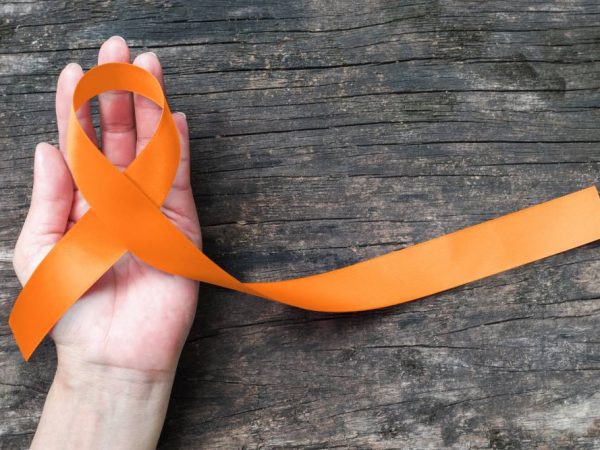Prostate cancer recently overtook breast cancer to become the UK’s third biggest cancer killer. According to Prostate Cancer UK, 11,819 men now die from prostate cancer every year.
Cyrotherapy is a unique and anticipated method of treatment for Prostate Cancer. It has been around for years, however, is not commonly heard of and is rarely used. There are few long-term studies that focus on cryotherapy as a treatment for prostate cancer. However, it has been proven to be an effective and even life-changing treatment method.

What Is Cryotherapy?
Cryotherapy is also known as cryosurgery or cryoablation. The procedure uses intense cold to freeze and destroy cancer cells. To prevent the urethra from freezing, a warming catheter is put into it. The needles are guided into the prostate tumours using ultrasound imagery to guide them. Gas is then passed down to freeze the prostate and kill the cancer cells. After the cancer cells are destroyed, white blood cells clean up the dead tissue and cells.
Who is Suitable for Cryotherapy?
Use of cryotherapy is approved for localized prostate cancer that is intermediate risk to high risk. However, it is only recommended for men with cancer in the prostate gland that hasn’t spread to any other parts of the body. Specialists assert that it is the most useful when a tumour has only extended out of one side of the prostate.
This method is often recommended for those who do not qualify for other surgery methods for various health reasons. Many men who aren’t well enough to get radiation therapy often opt for cryotherapy. Cryotherapy is also used as a secondary local therapy in men who underwent radiation therapy as initial treatment for early-stage prostate cancer. It can be useful for men who have had unsuccessful results with radiation therapy. The prostate cancer cells can sometimes be less sensitive to radiation and respond better to cryotherapy.

How Successful is Cryotherapy?
A recent study followed the results of the cryosurgical destruction of primary adenocarcinoma of the prostate. It was performed via the perineal route in 215 patients during a 12-year period. In 74% of the patients, no clinical evidence of a tumour was found in the prostatic fossa following cryosurgery. Few patients in the study required transurethral surgery and none needed repeated transurethral resections for obstructive symptoms. This experience suggests that local destruction of prostatic carcinoma can be achieved with little morbidity and mortality.
What are the Advantages and Disadvantages of Cryotherapy?
Advantages
– Cryotherapy involves less invasive surgery than some other treatments
– The procedure results in little blood loss
– It does not require a long-term hospital stay
– It can be repeated if needed. Cryotherapy may be a treatment option if your cancer has come back after radiotherapy or brachytherapy
Disadvantages
– The following possible side effects have been reported in the past:
-Blood in the urine
-Bleeding from the cryotherapy area
– It can sometimes cause injury to surrounding tissues such as the rectum or bladder given the proximity of these structures to the prostate bed
-Constipation
-Pain
-Bruising
Possible long-term side effects include:
-Erection Problems
-Loss of control of urine
-Infection
-Problems passing urine due to blockage of the urethra
-A hold between the bladder and back passage

The Risk of Incontinence and What to Expect
A number of modifications have been made over the years to avoid freezing damage to the nearby structures. However, damage can sometimes be done to the urethra during the procedure, causing it to narrow. Cryotherapy does entail relatively low rates of incontinence after the catheter is removed. Generally, 5 percent of patients who undergo prostate cryotherapy as primary therapy and 10% of patients who undergo treatment as salvage therapy will experience urinary incontinence. There is a recent investigation into treating only a portion of the prostate with cryotherapy. The severity and occurrence of incontinence are largely affected by the relative health of a patient as well as whether cryosurgery is a primary or salvage option of treatment. Cryotherapy is rapidly improving in terms of reducing side-effects.
Immediately following the procedure, many men experience temporary side effects that differ slightly from incontinence. These can include slight irritation, pain and minor leakage. Most men will recover as they gradually heal from Cryotherapy. A small portion of men, however, will have urinary incontinence. Incontinence after surgery is generally rare in men. You are much more likely to develop incontinence if you have already had radiotherapy.
After surgery, you will have frequent check-ups with your Doctor or Nurse at the hospital. The hospital will also offer PSA tests to check how well the cryotherapy has worked.
Things to Remember Before Choosing Cryotherapy
-Get the opinions of several different Doctors as to what your best option is
-Ensure you research your treatment choices before making a decision
-Read about the pros and cons of the surgery
-You can live a full life after prostate cancer treatment, so ensure you are willing to receive treatment
Are you looking for the perfect product to help you manage your incontinence? Read about how to choose the right male incontinence pants here.

RELATED TO THIS TOPIC:
Originally posted 2018-05-04 15:47:27.












Leave a Reply